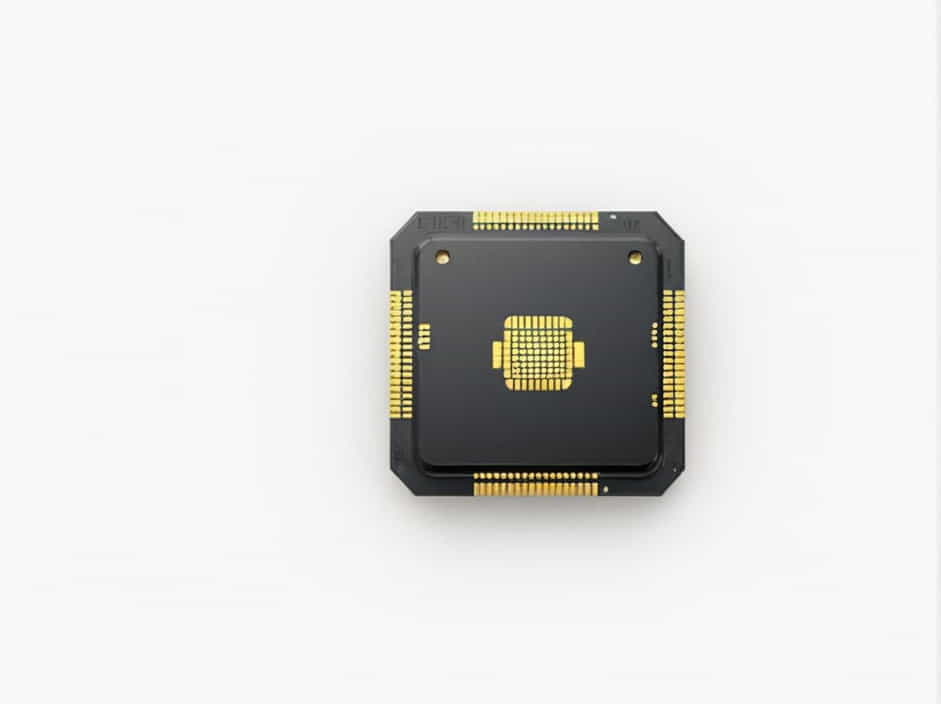In the world of computing and embedded systems, microprocessors and microcontrollers play a crucial role in powering electronic devices. Although they may sound similar, they serve different purposes and are designed for distinct applications.
Understanding the difference between a microprocessor (MPU) and a microcontroller (MCU) is essential for anyone working in embedded systems, robotics, automation, and consumer electronics. This topic explores the key differences, applications, and advantages of both components.
What Is a Microprocessor?
A microprocessor (MPU) is the central processing unit (CPU) of a computer, responsible for executing instructions and performing calculations. It does not include built-in memory, input/output ports, or peripheral interfaces, requiring external components for full functionality.
Key Features of a Microprocessor
✔ Primarily used in computers and high-performance devices.
✔ Requires external memory (RAM, ROM) and peripherals for operation.
✔ Designed for general-purpose computing tasks.
✔ Common in PCs, laptops, and advanced computing devices.
Examples of Microprocessors
- Intel Core i7 (Used in personal computers)
- AMD Ryzen 9 (High-performance gaming and computing)
- ARM Cortex-A series (Mobile devices and tablets)
What Is a Microcontroller?
A microcontroller (MCU) is a compact integrated circuit that includes a CPU, memory (RAM, ROM), and input/output ports in a single chip. It is optimized for specific control-based applications, making it ideal for embedded systems.
Key Features of a Microcontroller
✔ Includes CPU, memory, and I/O ports in a single unit.
✔ Designed for specific tasks like motor control, sensor interfacing, and automation.
✔ Consumes less power, making it suitable for battery-operated devices.
✔ Common in IoT devices, home appliances, and robotics.
Examples of Microcontrollers
- Arduino Uno (ATmega328P) – Used in hobbyist projects and automation.
- PIC16F877A – Used in industrial and automotive applications.
- ESP32 – Used in IoT applications with built-in WiFi and Bluetooth.
Key Differences Between Microprocessor and Microcontroller
| Feature | Microprocessor (MPU) | Microcontroller (MCU) |
|---|---|---|
| Integration | Requires external memory and peripherals | Includes CPU, memory, and I/O ports in one chip |
| Power Consumption | High power consumption | Low power consumption |
| Processing Speed | Faster, optimized for complex tasks | Slower, optimized for specific control applications |
| Application | General-purpose computing (PCs, servers) | Embedded systems (IoT, automotive, home appliances) |
| Cost | Expensive due to additional components | Cost-effective and compact |
| Programming Complexity | Complex, requires external hardware | Simple, designed for embedded tasks |
When to Use a Microprocessor?
A microprocessor is best suited for applications that require high-speed data processing and multitasking. It is ideal for:
✔ Personal computers and laptops – Running operating systems like Windows or Linux.
✔ Gaming consoles – Processing high-end graphics.
✔ Data servers and workstations – Handling large-scale computations.
✔ Smartphones and tablets – Performing multitasking and running complex applications.
Advantages of Microprocessors
✔ High-speed performance for multitasking and computations.
✔ Can handle large amounts of data and complex applications.
✔ Suitable for software-intensive applications.
Disadvantages of Microprocessors
✖ Requires external components, making the system bulky.
✖ Higher power consumption, not ideal for battery-powered devices.
✖ More expensive compared to microcontrollers.
When to Use a Microcontroller?
A microcontroller is best for control-oriented tasks, where efficiency and low power consumption are key. It is commonly used in:
✔ Embedded systems – IoT devices, smart home automation.
✔ Automotive applications – Engine control, airbag deployment.
✔ Industrial automation – Sensors, robotic arms, temperature controllers.
✔ Consumer electronics – Washing machines, microwaves, remote controls.
Advantages of Microcontrollers
✔ All-in-one solution with CPU, memory, and I/O ports.
✔ Power-efficient, suitable for battery-operated devices.
✔ Cost-effective and ideal for mass production.
✔ Compact size, making it easy to integrate into small devices.
Disadvantages of Microcontrollers
✖ Lower processing speed compared to microprocessors.
✖ Limited memory and computational power.
✖ Not suitable for complex applications like gaming or multimedia processing.
Microprocessor vs. Microcontroller: Which One to Choose?
Choose a Microprocessor If:
✔ You need high-speed processing for complex applications.
✔ The system requires multitasking and heavy computations.
✔ The device will run a full operating system (Windows, Linux, etc.).
Choose a Microcontroller If:
✔ You need a compact, low-power solution.
✔ The system will perform specific repetitive tasks.
✔ The device operates on batteries or embedded circuits.
While microprocessors and microcontrollers may seem similar, they serve very different purposes. A microprocessor is designed for high-performance computing, while a microcontroller is optimized for specific control-based applications.
Understanding these differences helps engineers, developers, and hobbyists choose the right component for their projects, ensuring efficiency, cost-effectiveness, and optimal performance.
